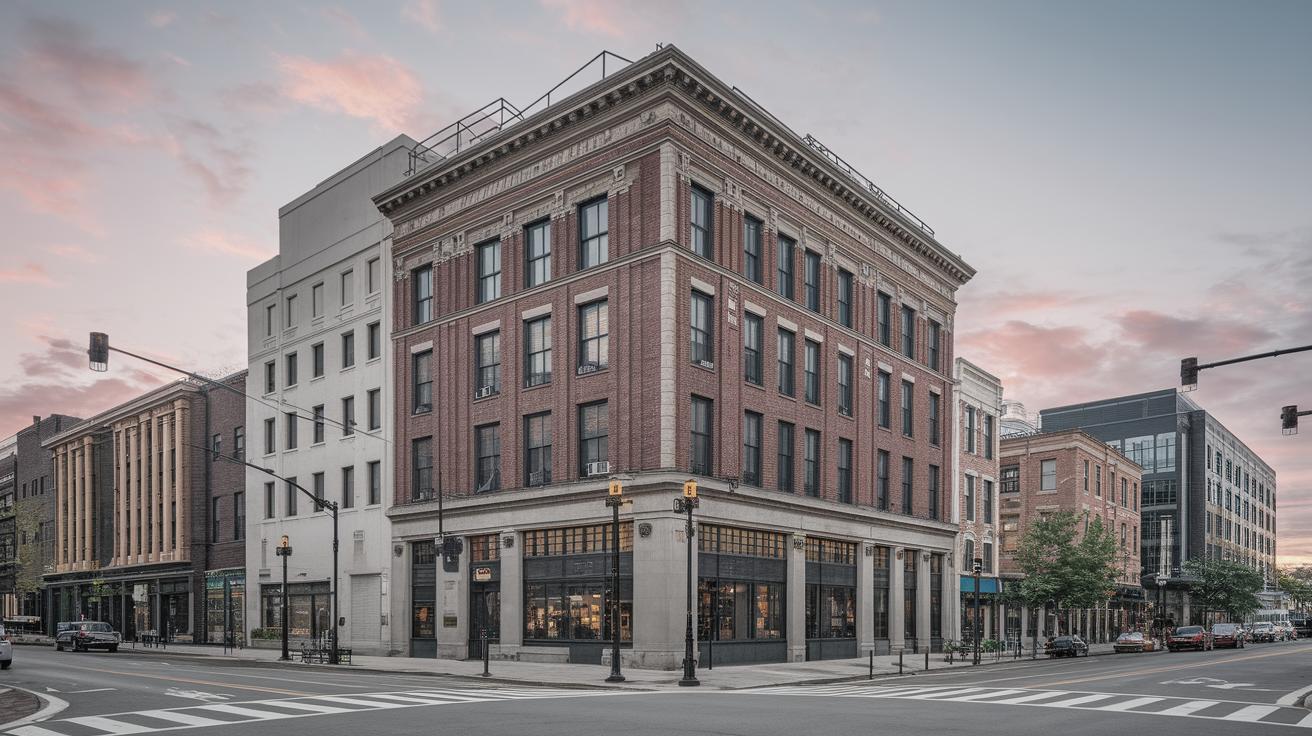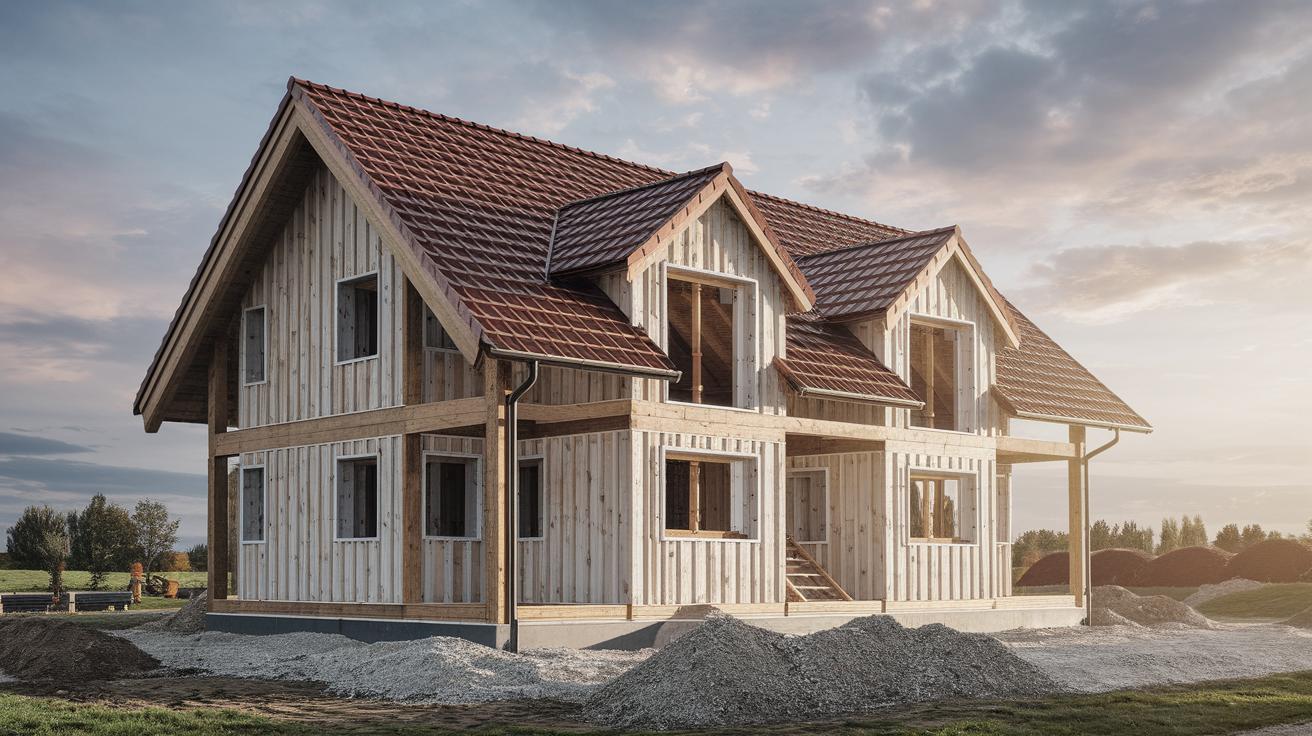How to Renovate a Historic Building While Preserving Its Character
Renovating a historic building can be a rewarding endeavor, but it comes with unique challenges. Balancing modern amenities and preserving historic integrity requires careful planning and creativity. In this guide, we’ll explore key strategies to achieve this balance, focusing on living in the space to understand its nuances, utilizing a phased approach, and rethinking storage solutions. We’ll also delve into the importance of natural light, alternative appliance layouts, and using materials that honor the building’s history. Finally, we discuss the importance of maintaining the footprint, experimenting with wallpaper, paying attention to sight lines, and adding time period-appropriate touches.
Live In It to Learn the Space
Before beginning any renovation project on a historic property, it’s crucial to live in the space to truly understand its quirks and characteristics. By residing in the building for a few months, you can identify which elements contribute to its unique charm and which aspects may need modern updates for comfort and convenience. This experience can offer insights that an immediate renovation might overlook, ensuring any changes made enhance rather than diminish the historical ambiance.
Living in the space allows you to observe how natural light filters through rooms at different times of the day, which architectural features define the period, and how traffic flows through the building. These observations inform decisions, leading to a renovation that doesn’t just modernize, but respects and highlights the building’s original character.
Use a Phased Approach
A phased approach to renovation is often beneficial for historic buildings. This method involves tackling the project in stages rather than all at once, allowing you to prioritize urgent repairs and adjustments while spreading out costs over time. By assessing the property’s needs and creating a comprehensive plan, you can strategically map out the renovation process, ensuring each phase contributes to the building’s overall preservation.
Moreover, a phased approach provides flexibility. As you progress, you can adapt and refine plans based on discoveries made during earlier stages. Each phase offers opportunities to ensure historical features are preserved, rather than rushing into a comprehensive transformation that might overlook intricate details unique to the building’s past.
Rethink Your Storage
Historic buildings often come with limited storage options, reflecting a time when people owned fewer possessions. Getting creative with storage solutions is key to maintaining the character of the building while meeting modern needs. Instead of installing modern built-in closets, consider using freestanding wardrobes or cabinetry that align with the building’s era, blending functionality with historical aesthetics.
Additions like under-stair storage or subtle wall niches can enhance storage without disrupting historical architectural lines. Custom shelving that follows the contours of rooms can add much-needed storage while maintaining the unique characteristics of the space, allowing history and practicality to coexist harmoniously.
Embrace Natural Light
Natural light is a crucial element that can accentuate the charm of historical architecture. Many historical buildings are known for their unique window designs and light-filled spaces, playing an essential role in their aesthetic appeal. Emphasizing these features in your renovation can enhance the living experience while preserving the building’s historic ambiance.
Consider opening up covered windows or incorporating reflective surfaces to maximize light flow. Restoring original windows or incorporating historically appropriate replacements can increase energy efficiency without compromising visual appeal. The goal is to respect the past while making the space welcoming and vibrant.
Consider an Alternative Appliance Layout
The layout of modern appliances in a historic building demands careful consideration to maintain the building’s character. Large, modern appliances can clash with the aesthetics of historic designs. Thoughtful placement and selection can mitigate this, allowing the building’s character to shine while incorporating necessary modern amenities.
Consider built-in appliances that blend with cabinetry, or selecting finishes that match historical elements. Creative solutions such as appliance garages or custom cabinetry that conceals modern technology can maintain the visual integrity of period-specific designs while offering the conveniences of the present.
Use What You Have From the House
Maximizing existing materials and architectural features from the house is a sustainable and character-preserving strategy. Reusing original materials like tiles, bricks, or wood not only maintains the historic feel but also keeps the renovation eco-friendly. Such features often possess unmatched craftsmanship and quality that contemporary alternatives may lack.
If any areas of the building are beyond repair, consider salvaging parts that can be used elsewhere in the renovation. Incorporating these pieces into new elements, like furniture or decorative features, honors the building’s history and allows its story to continue through creative reinterpretation.
Don’t Let Your Footprint Fail You
Maintaining the building’s original footprint is vital to preserving its historical character. Expansion isn’t always necessary to achieve modern functionality. Instead of altering the exterior or overall layout, focus on enhancing the interior flow and functionality. Open up spaces within the existing structure without losing character-defining walls and architectural features.
Reassessing room purposes and reconfiguring layouts internally can offer a modern appeal with historical respect. This approach ensures that any changes are sympathetic to the original design while meeting contemporary lifestyle needs, thereby striking a perfect balance between old and new.
Try Wallpaper
Wallpaper can be an excellent tool in historical renovations, allowing for period-appropriate decoration that enhances character. Opt for patterns that reflect the era in which the building was constructed to recapture its original atmosphere. This choice can create a cohesive visual tie between different elements within the space.
Use wallpaper to highlight architectural features or delineate spaces. Consider period-authentic but modern-quality materials to ensure durability. By selecting patterns and textures that echo the building’s past, homeowners can create spaces that are true to the character of the historical period.
Pay Attention to Sight Lines
Sight lines—the visibility and alignment of interior and exterior spaces—are crucial in maintaining the coherence of historic architecture. Preserving these lines ensures that viewers can appreciate the proportions and relationships between different parts of the building, a key aspect of many historical designs.
Strategically arrange furniture and select transparent design elements that complement rather than obstruct these lines. Simplicity often ensures that historic features remain the focal point. This approach contributes to an open and harmonious atmosphere, essential to preserving the aesthetics that define historical charm.
Consider Time Period True Touches
Incorporating authentic period touches can significantly enhance the character of a historic property. Fixtures such as lighting, molding, or even door handles that are true to the building’s original time period can be sourced and installed to deepen the connection to its historical roots.
Consult historical records to understand what elements were typical at the time of the building’s creation. Reproduction companies often provide modern depictions of period-specific designs that maintain authenticity while offering modern functionality. These details are subtle yet powerful reminders of the building’s heritage, ensuring history is honored in every aspect of the renovation.
| Strategy | Description |
|---|---|
| Live In It to Learn the Space | Understand the building’s quirks and character before renovating. |
| Use a Phased Approach | Tackle renovation in stages to prioritize important aspects and discover new possibilities. |
| Rethink Your Storage | Maintain historical aesthetics by opting for storage solutions that blend with the building’s era. |
| Embrace Natural Light | Maximize and restore light features to enhance the building’s charm. |
| Consider an Alternative Appliance Layout | Place appliances thoughtfully to maintain aesthetic integrity. |
| Use What You Have From the House | Repurpose original materials to maintain historical feel. |
| Don’t Let Your Footprint Fail You | Maintain and respect the building’s original footprint while enhancing functionality. |
| Try Wallpaper | Use period-appropriate wallpaper to highlight features and unify spaces. |
| Pay Attention to Sight Lines | Preserve visual flow and architectural coherence. |
| Consider Time Period True Touches | Incorporate authentic elements to deepen the connection to the building’s history. |


